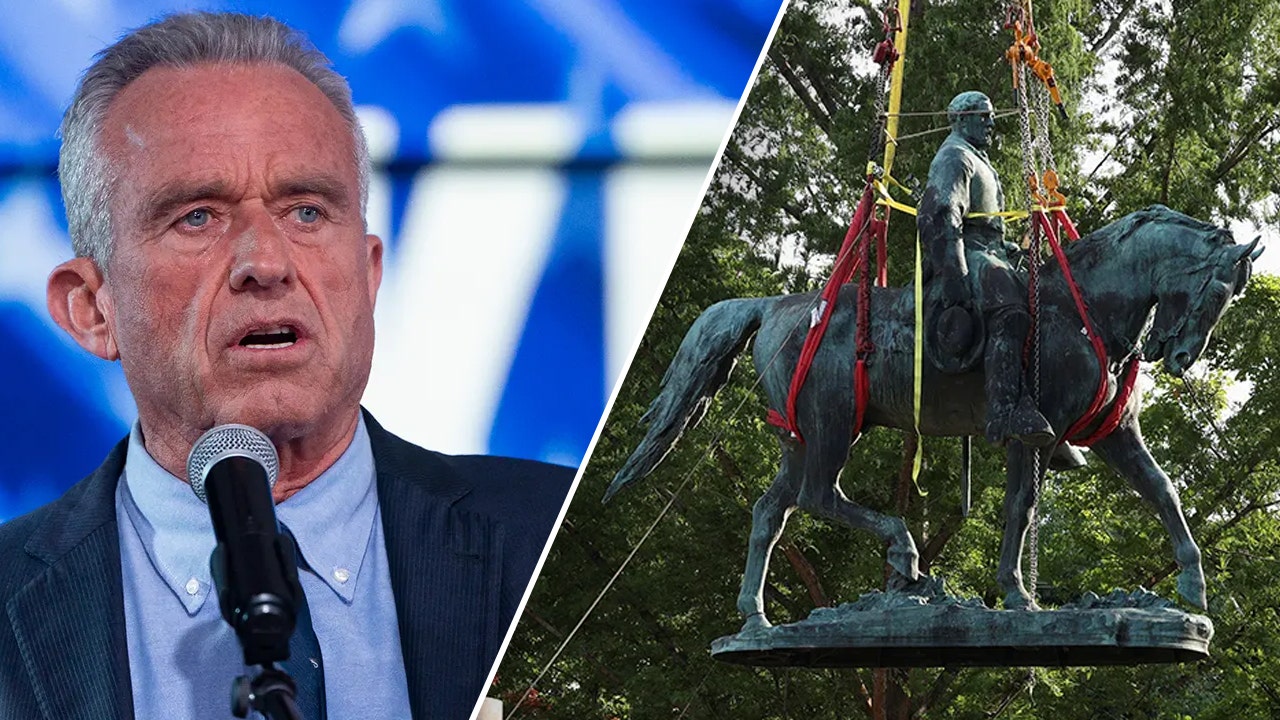California
California, Colorado, Oregon Breweries Rule Beer Awards

Nearly half the medals presented last month at the Great American Beer Festival were won by breweries in California, Colorado and Oregon, an analysis by this journalist shows.
Breweries in the three western states captured 45% of the 303 medals at the annual event in Denver that’s known as the Oscars of the U.S. brewing industry. Breweries in California, which has more breweries than any other state, took home the most gold, silver and bronze medals — 73. Breweries in Colorado won 40 medals, and those in Oregon won 23.
Customers celebrate the release of Pliny the Younger, a triple IPA, at Russian River Brewing … [+]
The competition was judged during nine days by 250 experts from 10 countries who evaluated 9,298 beers from 2,033 breweries in 175 beer styles. The breweries were from every state, plus the District of Columbia and Puerto Rico, and awards were given to 263.
One Colorado brewery, Westbound & Down, copped three medals: a gold for Westbound Select in the West Coast-Style IPA category, a silver for Spirit of the West in the New Zealand IPA category and a bronze for The Coloradan in the American Cream Ale category.
Oregon’s employee-owned Breakside Brewery did one better, winning four medals, including three golds. Its winning golds were for Cheat Codes in the American Black Ale or American Stout category; Life in the Other Strong Beer category, and The Trappings and The Suits of Woe in the Wood- and Barrel-Aged Strong Stout category. The brewery’s IPA won a silver in the American-Style IPA category.
Ohio may not be as renowned for beer making as many other states, but its breweries finished No. 4 in medals won — 19 — and the Buckeye State’s Third Eye Brewing Company won more awards than any other brewery in the country.
Third Eye, of Sharonville, Ohio, won five awards: two golds, two silvers and Brewer of the Year for breweries producing 1,001-2,000 barrels annually. Its gold-winning beers were Double Astral in the Chocolate Beer category and Chai Eye Captain in the Herb and Spice Beer category. Silver winners were Gourd Darn-it in the Pumpkin Beer category and Mounds of Importance, which Third Eye brewed with Ohio’s Narrow Path Brewing Co., in the collaboration competition.
In 14 states, breweries combined to win six or more medals (see list below), according to this journalist’s analysis. Breweries in 11 states — Arkansas, Alaska, Alabama, Hawaii, Idaho, Kentucky, Mississippi, North Dakota, Rhode Island, Vermont and West Virginia — won no medals.
Craft beer enthusiasts from throughout the country gather annually in Denver for the Great American … [+]
The Great American Beer Festival, organized by the Brewers Association trade group, was held Sept. 21-23 at the Colorado Convention Center. The awards ceremony was held Sept. 23 at Denver’s Bellco Theatre.
Here are the 14 states with six medals or more won by their breweries.
California: 73 medals, 21 gold, 20 silver, 32 bronze
Colorado: 40 medals, 12 gold, 20 silver, 4 bronze
Oregon: 23 medals, 9 gold, 8 silver, 6 bronze
Ohio: 20 medals, 8 gold, 9 silver, 3 bronze
Texas: 19 medals, 12 gold, 3 silver, 4 bronze
Washington: 14 medals, 3 gold, 7 silver, 4 bronze
Tennessee: 8 medals, 4 gold, 1 silver, 3 bronze
Virginia: 8 medals, 4 gold, 1 silver, 3 bronze
Illinois: 7 medals, 2 gold, 2 silver, 3 bronze
Indiana: 6 medals, 2 gold, 2 silver, 2 bronze
Florida: 6 medals, 2 gold, 1 silver, 3 bronze
Arizona: 6 medals, 1 gold, 2 silver, 3 bronze
Georgia: 6 medals, 1 gold, 5 bronze
New York: 6 medals, 4 silver, 2 bronze

California
California father’s dying wish comes true as he walks daughter down aisle at hospital wedding

A California couple moved their wedding ceremony to a hospital chapel to fulfill the bride’s father’s dying wish to accompany his daughter down the aisle.
There wasn’t a dry eye inside St. Joseph Hospital when Abraham Arceo, who is battling stage 4 pancreatic cancer, gave his daughter Brittny away to the love of her life.
“He’s honestly my hero, and I’ve always looked up to him, ever since I was a little girl. So, even with this battle … he just means so much to me,” a tearful Brittny told WKYT.
Brittny’s original wedding date is still set for the end of June, but her father’s cancer began rapidly progressing in recent weeks.
That’s when she talked to a nurse about having the ceremony at the hospital.
The hospital staff planned out the entire wedding, even measuring the width of the doors to ensure Abraham’s wheelchair could fit through and creating a backup plan in case it didn’t.
Fortunately, it was just the right size and Abraham was wheeled to the alter with his hand holding his daughter’s and an IV bag trailing closely behind.
“Very emotional. It’s just been very hard lately, but we’re just glad they were able to do this for us. It meant a lot to Brittny, to me. Just wanted to make sure he was able to see her get married,” said Abraham Arceo’s wife, Cecilia Arceo.
To Brittny, the hospital wedding was even more special than anything she could have planned at a fancy venue.
“I’m just glad that he’s going to be able to live this moment and be able to walk me down because I know that’s what he wants. He just wants me to be happy,” Brittny told the outlet.
As the ceremony ended, a crowd of family members, nurses, doctors and hospital staff members cheered for the newlyweds and the bride’s father – whose wish came true.
California
Former California water official pleads guilty to conspiring to steal water from irrigation canal

A former California water official has pleaded guilty to conspiring to steal water in a deal with federal prosecutors in the state’s crop-rich Central Valley.
The Los Angeles Times reports Tuesday that 78-year-old Dennis Falaschi, who used to head the Panoche Water District, entered the plea in federal court in Fresno. He also pleaded guilty to filing a false tax return.
Falaschi was accused in a case that alleged that more than $25 million in water was stolen over two decades when it was siphoned from a federal irrigation canal through a secret pipe and sold to farmers and other water districts. The Panoche Water District supplies irrigation for farmland in Fresno and Merced counties — much of it from the federal Delta-Mendota canal.
Authorities said in court documents that Falaschi wasn’t the only one taking water, but did not specify who else was involved. They estimated Falaschi stole less than $3.5 million in water, a small portion of what they initially alleged had been stolen.
The case comes as California has embarked on a yearslong effort to conserve water use by passing a groundbreaking law to regulate groundwater pumping, encouraging urban users to replace thirsty lawns with more drought-friendly landscaping and ramping up water storage efforts to help the state navigate expected dry years ahead.
The state moved to reduce groundwater use after overpumping led farmers to drill deeper for water and some rural wells to grow dry. The prospect of pumping limits has worried California farmers who grow much of the country’s fresh produce.
Falaschi, who has agreed to cooperate with federal prosecutors in any additional investigations, is scheduled to be sentenced in September. He declined to speak with the newspaper after Tuesday’s hearing.
Assistant U.S. Attorney Joseph D. Barton also declined to comment.
California
California wants to be carbon-neutral by 2045. What does that mean for its big economic drivers?

California’s governor, Gavin Newsom, flew more 6,000 miles to Rome this month to deliver a brief speech on climate change at a Vatican-sponsored conference.
Media reports of Newsom’s appearance centered on his verbal potshot at former President Donald Trump and his conversation with Pope Francis who, Newsom said, praised his unilateral suspension of executions in California.
However, the governor did devote a little time to climate change, mostly reiterating his villainization of the oil industry.
“It’s because of the burning of gas, the burning of coal, the burning of oil,” Newsom said. “We have the tools. We have the technology. We have the capacity to address the issue at a global scale and they’ve been fighting every single advancement and we have got to call that out.”
At this point, we should remind ourselves that Newsom’s constant gallivanting to polish his image as a political heavyweight depends on planes and automobiles that burn petroleum. Nevertheless, he has proclaimed that California will by 2045, just 21 years hence, become carbon emission-neutral.
In 2022, the state Air Resources Board issued a “scoping plan” with multiple precise steps to achieve the goal. Newsom hailed it as “a comprehensive roadmap to achieve a pollution-free future” and, with characteristic hyperbole, “the most ambitious set of climate goals of any jurisdiction in the world … (that could) spur an economic transformation akin to the industrial revolution.”
That’s a lot to be done in just a couple of decades, and there’s not been a particularly noticeable amount of progress. In fact, there’s been some regression.
It’s questionable whether California will have enough power from solar panels and windmills not only to fill current demand but supply additional juice for the many millions of battery-powered cars and trucks that the plan envisions.
Fearing blackouts, Newsom pressed to keep some natural gas-fired power plants and the state’s only nuclear-powered plant operating past their planned phaseout dates. Electric car sales have languished, even though automakers are supposed to quit selling gasoline- and diesel-powered vehicles in just 11 years. Car buyers are leery because the state still has only a fraction of the recharging stations conversion requires.
Furthermore, to deal with a budget crisis, Newsom has slashed spending on climate change programs.
One of the biggest unknowns about a carbon-neutral future, however, is the impact on economic sectors that depend on transportation. A new report on one of those sectors, Southern California’s logistics industry, frames the issue.
A half-century ago, Southern California’s leaders bet the region’s future on the twin ports of Los Angeles and Long Beach becoming the nation’s primary conduit for trade with Asia, and the transportation and warehousing facilities to handle cargo.
The new report from the California Center for Jobs and the Economy, an offshoot of the California Business Roundtable, reveals how impressively that goal has been achieved.
What it terms the “regional trade cluster” is the region’s largest single source of employment, supporting 1.85 million jobs, two-thirds of which require only a high school education or less – an important characteristic given its huge immigrant population.
However, global transportation is a cutthroat business and the twin ports have seen their traffic decline in recent years due to competition from ports with lower operational costs. The sector is also being pressed by state and local authorities to convert ships, trucks, locomotives and other machinery to low- or no-emission propulsion, at huge cost. There has been a backlash against the massive warehouse complexes in inland areas.
Can the industry undergo the massive conversion Newsom’s plan envisions in just 21 years – without becoming terminally uncompetitive and shedding the jobs on which so many of the region’s families depend?
It’s a microcosm of the larger uncertainty.
Dan Walters is a CalMatters columnist.
-

 Movie Reviews1 week ago
Movie Reviews1 week ago‘The Substance’ Review: An Excellent Demi Moore Helps Sustain Coralie Fargeat’s Stylish but Redundant Body Horror
-

 Movie Reviews1 week ago
Movie Reviews1 week ago‘Rumours’ Review: Cate Blanchett and Alicia Vikander Play Clueless World Leaders in Guy Maddin’s Very Funny, Truly Silly Dark Comedy
-

 Culture1 week ago
Culture1 week agoFrom Dairy Daddies to Trash Pandas: How branding creates fans for lower-league baseball teams
-

 News1 week ago
News1 week agoVideo: A Student Protester Facing Disciplinary Action Has ‘No Regrets’
-

 World1 week ago
World1 week agoPanic in Bishkek: Why were Pakistani students attacked in Kyrgyzstan?
-

 Politics1 week ago
Politics1 week agoAnti-Israel agitators interrupt Blinken Senate testimony, hauled out by Capitol police
-

 Politics1 week ago
Politics1 week agoMichael Cohen swore he had nothing derogatory on Trump, his ex-lawyer says – another lie – as testimony ends
-

 News1 week ago
News1 week agoCity of Kyle falls short of ‘Kyle’ world record

:quality(70):focal(1930x1782:1940x1792)/cloudfront-us-east-1.images.arcpublishing.com/shawmedia/NPTYRQJ2LNB7PIDYWAO5L7PVSQ.jpg)

















